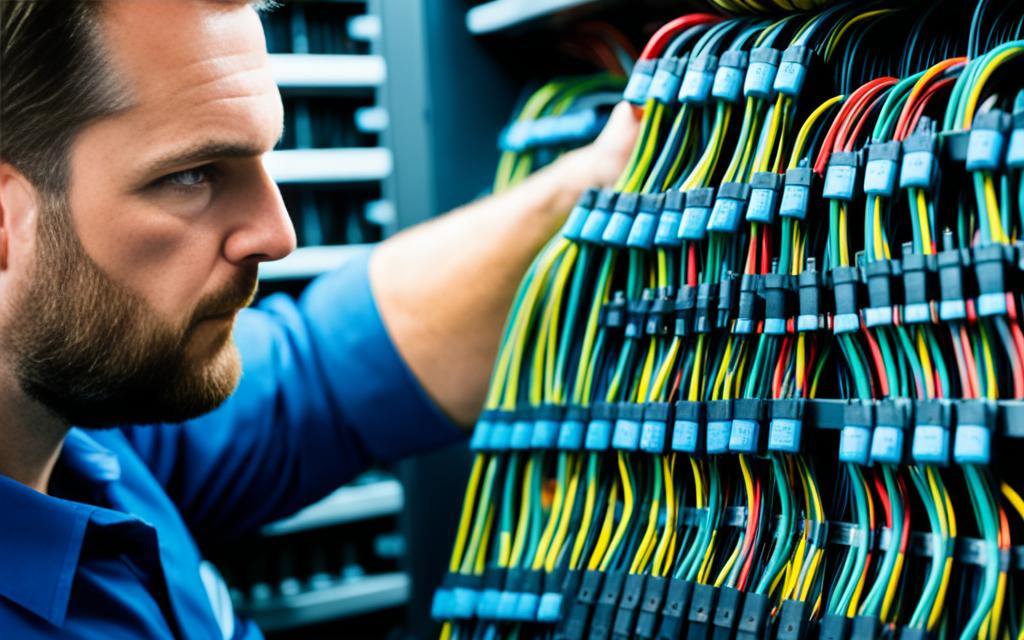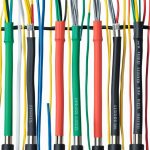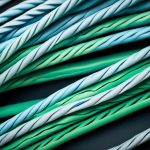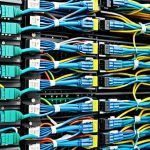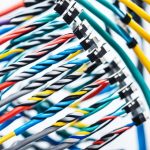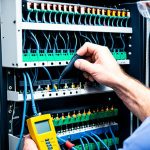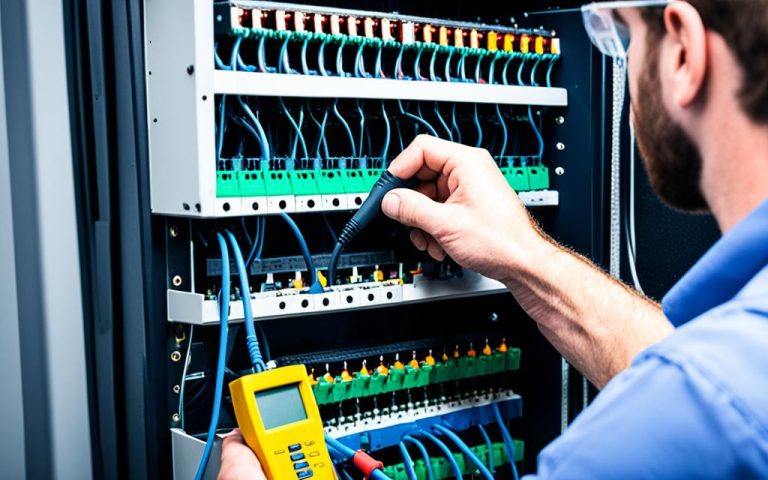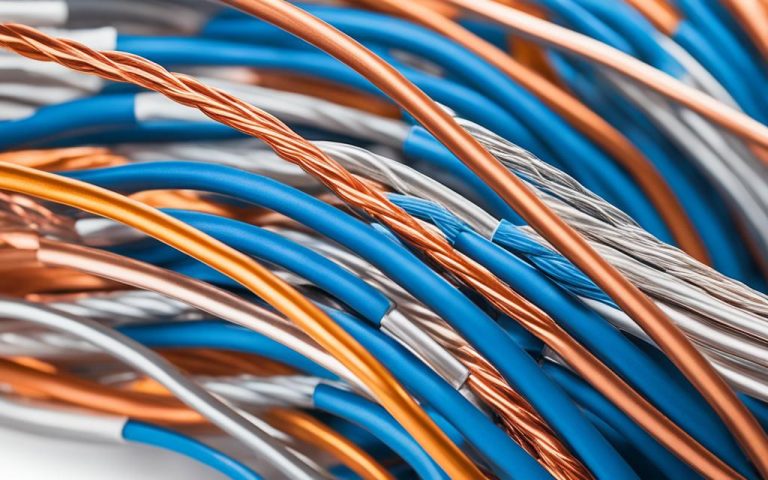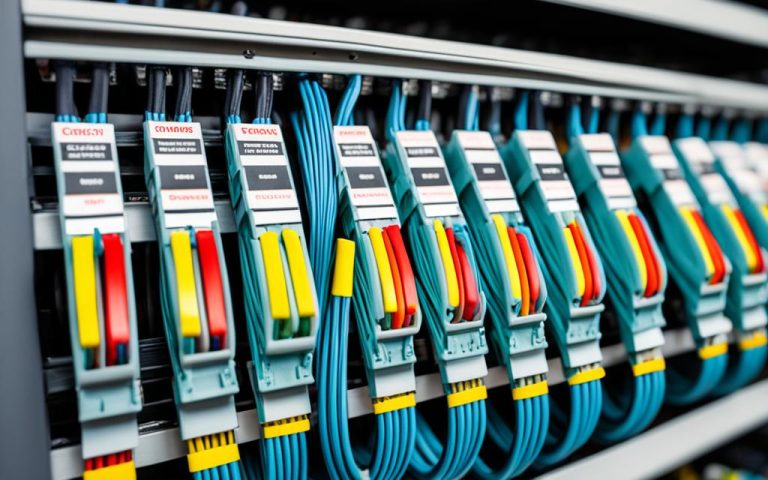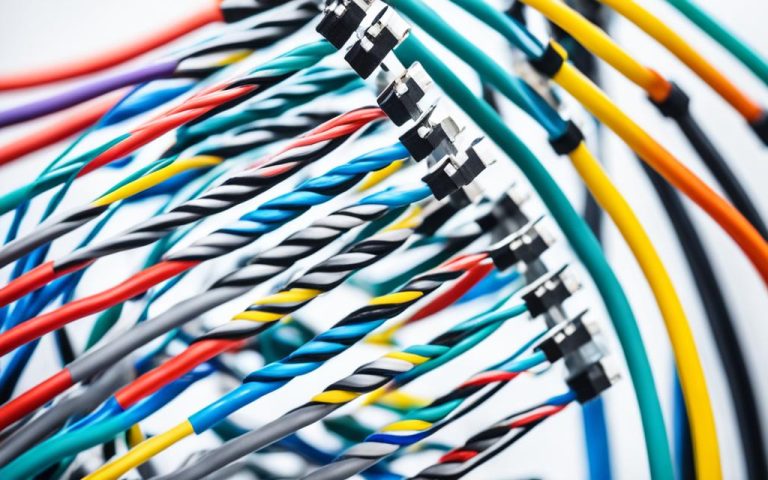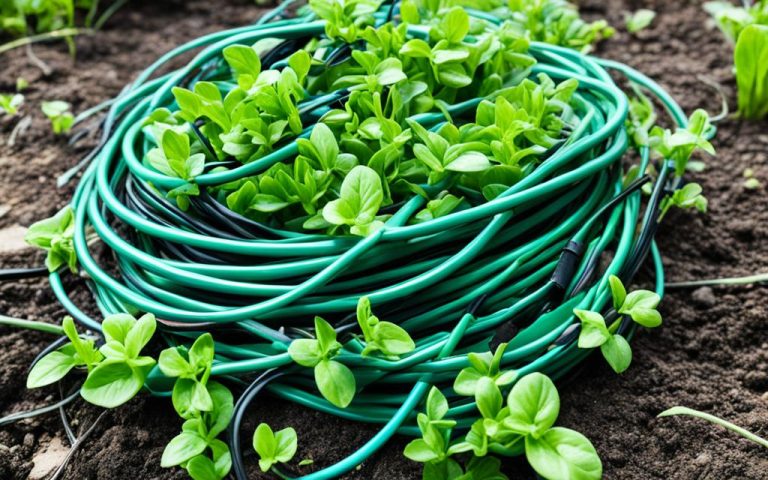In the world of networking, twisted pair networks play a crucial role in ensuring seamless connectivity between devices. However, even the most robust networks can encounter connectivity problems at times. It is essential for network installers and technicians to possess the knowledge and skills to diagnose and resolve these common issues effectively.
When it comes to diagnosing issues in twisted pair networks, a comprehensive understanding of the common problems that may arise is key. Whether it’s a simple connectivity problem or a more complex network fault, knowing where to start the troubleshooting process is essential to minimize downtime and restore network functionality swiftly.
To begin the diagnostic process, there are several fundamental checks that should be carried out. First and foremost, ensuring that all devices are properly plugged in and powered on is crucial. Additionally, verifying that cables are plugged into the correct ports and creating a logical diagram of the network’s connectivity can help identify any potential configuration issues.
Choosing the right cable type and standard is another critical factor that can significantly impact network performance. Using the appropriate cables for your network’s specific needs, regularly inspecting them for any signs of damage or degradation, and avoiding misconfiguration or mismatch are key steps in preventing common connectivity issues.
One common issue that can arise in twisted pair networks is a “split pair.” This occurs when the pairs of wires within a cable become separated, leading to poor connectivity or no connection at all. Understanding the concept of a split pair and being vigilant in detecting and resolving this issue can help optimize network performance.
By proactively familiarizing yourself with the common issues in twisted pair networks and implementing effective diagnostic techniques, you can minimize downtime, restore connectivity, and ensure optimal network performance. In the following sections, we will explore the common causes of network cabling faults, troubleshooting techniques, and best practices for network cabling to empower you with the knowledge and tools to overcome connectivity problems in twisted pair networks.
Common causes of network cabling faults
In the world of network cabling, faults can be a common occurrence that disrupts connectivity and hampers productivity. Understanding the underlying causes of these faults is crucial to prevent and minimize network cabling issues. Here, we will explore the various factors that contribute to cabling faults in a network.
Physical Damage and Degradation
Physical damage to network cables is one of the primary culprits behind cabling faults. Cuts, kinks, twists, or exposure to moisture and heat can weaken the cable structure, leading to signal loss and connectivity issues. Regular inspection of cables for any signs of damage or degradation is essential to detect and rectify potential faults before they escalate.
Misconfiguration and Mismatch
Another common cause of cabling faults is misconfiguration or mismatch of cables within the network. Human errors during installation, lack of proper documentation, or the use of incompatible devices can result in incorrect connections and settings. These discrepancies can disrupt the flow of data and compromise network performance. Verifying cable connections and settings, as well as ensuring clear and accurate documentation, is vital to prevent misconfiguration and mismatch.
Errors in Cable Installation and Management
Errors during cable installation and management can also contribute to network cabling faults. Poor organization, improper cable routing, and lack of adherence to industry best practices can introduce interference and reduce cable performance. Following recommended guidelines for cable installation, such as avoiding exceeding the maximum length and bending radius, is crucial to maintain optimal signal integrity and prevent faults.
By addressing these common causes of network cabling faults, businesses can establish a reliable and robust network infrastructure. Regular inspection, verification, and adherence to best practices in cable installation and management are key to ensuring a smooth and uninterrupted network connectivity experience.
Troubleshooting network cabling faults
When it comes to resolving network cabling faults, having the right tools and techniques is essential. Cable testing is a crucial step in identifying and diagnosing issues that may be affecting network connectivity. Some common problems that can be detected through cable testing include continuity, polarity, pinout, length, impedance, attenuation, and performance.
There are several types of cable testers available, each serving a specific purpose. Continuity testers are used to ensure that there is a continuous flow of data through the cable. Wire mappers help identify any faults or breaks in the cable by transmitting a signal and analyzing the response. Cable analyzers provide more advanced testing capabilities, including length measurement, impedance testing, and performance analysis.
When using these cable testers, it is important to follow the provided instructions carefully to ensure accurate results and avoid any safety hazards. Taking the time to troubleshoot network cabling faults can save significant time and effort in the long run.
Aside from cable testing, having a proper cable documentation and management system is also crucial in troubleshooting network cabling faults effectively. This system should include keeping track of cable inventory, layout, connections, labels, and standards. Regular testing of cables before and after installation is important to identify any potential issues and resolve them promptly.
Here is an example of a table showcasing different troubleshooting techniques for network cabling faults:
| Troubleshooting Techniques | Description |
|---|---|
| Visual inspection | Inspecting cables for physical damage or degradation. |
| Cable continuity testing | Checking for continuity in the cable to ensure uninterrupted data flow. |
| Wire mapping | Verifying the correct wiring of cables, identifying any faults or breaks. |
| Cable length measurement | Determining the length of the cable and verifying it against the required specifications. |
| Impedance testing | Checking the impedance of the cable to ensure optimal signal transmission. |
| Performance analysis | Assessing the overall performance of the cable, including signal quality and data transfer speeds. |
By utilizing these troubleshooting techniques and maintaining proper cable documentation and management, network technicians can effectively diagnose and resolve network cabling faults, ensuring optimal performance and reliability of the network.
Choosing the right cable type and standard
When it comes to setting up a network, choosing the right cable type and standard is essential for ensuring optimal performance and reliability. Twisted pair cables, such as Cat5e, Cat6, or Cat7, are commonly used in Ethernet networks.
Each category of cable has its own specifications, including maximum bandwidth, length, and resistance to interference. By carefully considering your network requirements and the environment in which the cables will be installed, you can select the appropriate cable type and standard to meet your specific needs.
Here are some important factors to consider:
- Bandwidth requirements: Determine the amount of data that will be transmitted over the network and choose a cable that can handle the necessary bandwidth.
- Length limitations: Be aware of the maximum length supported by different cable types and choose one that can accommodate the distance between network devices.
- Resistance to interference: Consider factors such as nearby electrical equipment, electromagnetic fields, and environmental conditions that may introduce interference and select a cable with appropriate shielding.
Following best practices for cable installation and maintenance is also crucial for optimizing network performance. Avoid exceeding the maximum length or bending radius of cables, as this can impact signal quality and transmission speeds. Regularly inspect cables for any signs of damage or wear, and replace them if necessary.
Remember, choosing the right cable type and standard is just one part of building a reliable network. It is equally important to ensure proper cable management, documentation, and adherence to network standards, as discussed in subsequent sections.
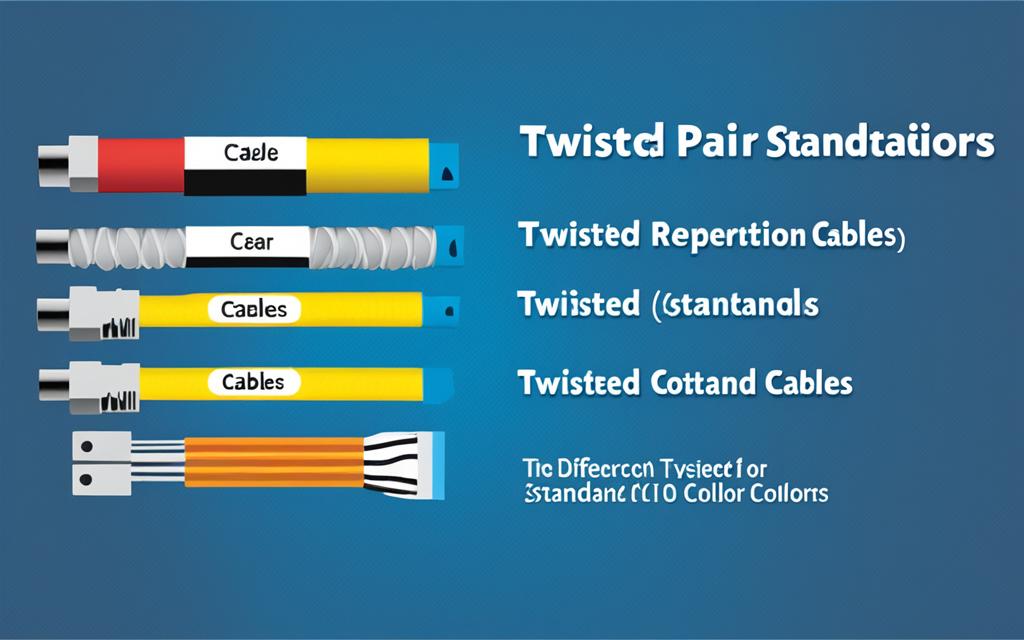
“Selecting the right cable type and standard is crucial for optimizing network performance and ensuring a stable and secure connection.”
Proper cable documentation and management
Proper cable documentation and management are crucial for preventing and minimizing network cabling faults. By keeping track of cable inventory, layout, connections, labels, and standards, you can ensure easy troubleshooting and maintenance. For added protection against physical damage and the risk of misconfiguration or mismatch, it is essential to organize cables neatly and securely using cable trays, conduits, ties, clips, or racks. Regularly updating cable documentation and management allows you to identify and resolve any potential issues in a timely manner.
Benefits of Cable Documentation
Effective cable documentation provides several benefits, including:
- Improved troubleshooting: Clear and up-to-date cable documentation enables quick identification of specific cables and their connections, reducing the time and effort required to troubleshoot and resolve issues.
- Efficient maintenance: With accurate cable documentation, technicians can efficiently perform routine maintenance tasks, such as inspecting cables for damage, updating connectivity records, and ensuring compliance with standards.
- Enhanced scalability: Proper cable documentation facilitates network expansion and upgrades by providing a comprehensive overview of existing cable infrastructure, allowing you to plan and implement changes effectively.
Best Practices for Cable Management
Implementing effective cable management practices can minimize the risk of cabling faults and improve overall network performance. Consider the following best practices:
- Labeling: Clearly label both ends of each cable to easily identify connections and reduce the likelihood of human error during troubleshooting or maintenance.
- Organized layout: Arrange cables in a logical and structured manner, grouping them by function or location. This helps prevent tangles, reduces interference, and simplifies future modifications.
- Cable length control: Avoid excessive cable lengths, as they can lead to signal degradation and increased susceptibility to interference. Using the appropriate cable length for each specific connection improves performance and minimizes potential issues.
- Adequate ventilation: Ensure proper airflow around cables to prevent overheating, which can damage cables and degrade network performance. Consider using cable management solutions that promote airflow, such as open racks or cable trays.
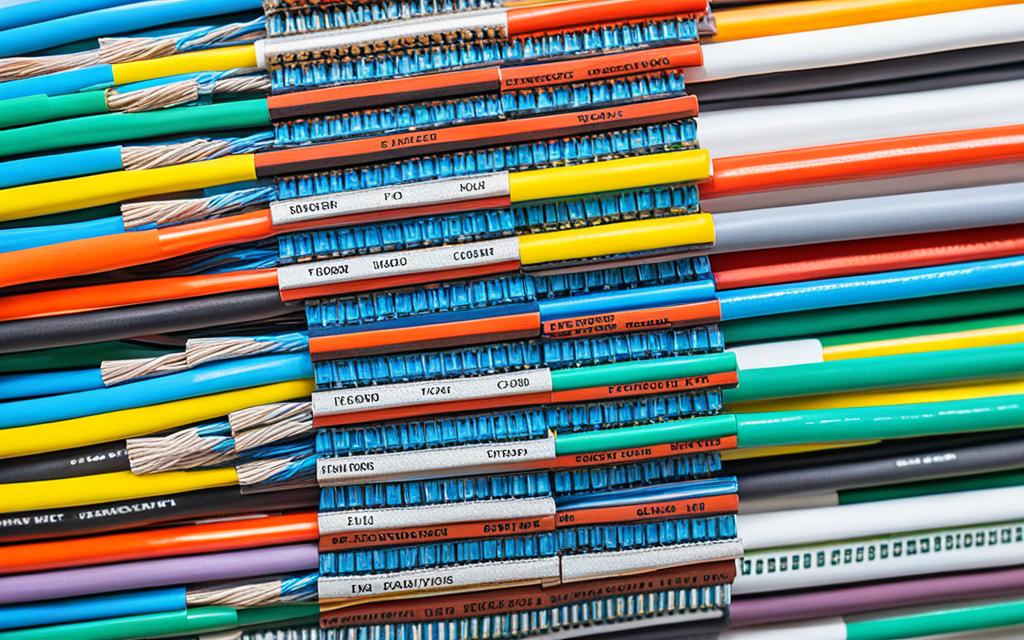
| Benefits of Proper Cable Documentation and Management | Best Practices for Cable Management |
|---|---|
| Improved troubleshooting | Labeling |
| Efficient maintenance | Organized layout |
| Enhanced scalability | Cable length control |
| Adequate ventilation |
Best practices for network cabling
Following best practices for network cabling is crucial in optimizing performance and ensuring reliability. Implementing these practices can help prevent issues and minimize downtime. Here are some key guidelines to consider:
1. Careful planning of cable installation
Before starting any cable installation project, it is essential to plan meticulously. Consider the specific requirements of your network, including the number of devices, bandwidth needs, and potential future growth. Evaluate the budget and select high-quality cables and connectors that meet industry standards. Take into account the physical environment and plan routes that avoid potential sources of interference.
2. Adherence to maximum length and bending radius guidelines
Each cable type has recommended maximum length and bending radius specifications. Exceeding these limits can degrade signal quality and impair performance. Ensure that cables are installed within the specified limits to maintain optimal network performance and reduce the risk of signal loss or crosstalk.
3. Avoid running cables near sources of interference
Electromagnetic interference (EMI) can negatively impact network performance. To minimize the risk of EMI, avoid running cables in close proximity to power lines, fluorescent lighting fixtures, electrical machinery, or other sources of electromagnetic radiation. By maintaining a sufficient distance, you can reduce the likelihood of signal degradation.
4. Testing cables before and after installation
Prior to installation, it is essential to test cables to ensure their quality and integrity. Cable testing can help identify any potential issues before they become problematic and ensure that all cables meet performance standards. Conducting tests after installation helps verify proper connections, signal strength, and integrity, providing confidence in the cabling infrastructure.
5. Regular updates to cable documentation and management
Keeping accurate and up-to-date records of your cable infrastructure is crucial for easier troubleshooting and maintenance. Create a comprehensive cable documentation system that includes details such as cable types, termination points, cable IDs, and labeling. Regularly update this documentation to reflect any changes or improvements made to the network.
To provide additional context and insights, here’s a table highlighting the best practices mentioned:
| Best Practice | Description |
|---|---|
| Careful planning of cable installation | Consider network requirements, budget, and environment for optimal cable installation. |
| Adherence to maximum length and bending radius guidelines | Ensure cables are installed within specified limits to maintain performance. |
| Avoid running cables near sources of interference | Minimize the risk of electromagnetic interference by maintaining a distance from potential sources. |
| Testing cables before and after installation | Verify cable quality and integrity, ensuring compliance with performance standards. |
| Regular updates to cable documentation and management | Maintain accurate records of cable infrastructure for ease of troubleshooting and maintenance. |
By following these best practices, you can optimize the performance and reliability of your network cabling infrastructure. Implementing these guidelines from the planning stage to ongoing maintenance will help minimize downtime and streamline troubleshooting processes.
Conclusion
In conclusion, effectively diagnosing and resolving common issues in twisted pair networks requires a thorough understanding of the common causes of network cabling faults and the appropriate troubleshooting techniques. By applying the right cable type and standard, maintaining proper cable documentation and management, and following best practices for network cabling, technicians and installers can ensure optimal performance and reliability.
Regular testing, inspection, and updates to cable systems are crucial in preventing and resolving connectivity problems. By implementing a systematic and diligent approach, network issues in twisted pair networks can be effectively addressed and resolved.
Ultimately, proactive measures such as selecting the right cables, conducting regular tests, and maintaining comprehensive documentation will contribute to a more efficient and reliable network infrastructure. By investing the necessary time and effort, organizations can minimize downtime, improve network performance, and ensure smooth operations.
FAQ
What are the most common causes of network cabling faults?
The most common causes of network cabling faults can be attributed to physical damage or degradation of the cables, misconfiguration or mismatch of the cables, and errors in cable installation and management.
How can I troubleshoot network cabling faults?
To troubleshoot network cabling faults, it is important to use appropriate tools such as cable testers like continuity testers, wire mappers, and cable analyzers. Following the instructions for using these testers correctly and safely can help in effectively troubleshooting network cabling faults.
How do I choose the right cable type and standard for my network?
Choosing the right cable type and standard for your network is crucial. It is important to consider your network requirements and environment when selecting the appropriate cable type and standard. Twisted pair cables, such as Cat5e, Cat6, or Cat7, are widely used for Ethernet networks with each category having its own specifications.
How can I ensure proper cable documentation and management?
Proper cable documentation and management play a significant role in preventing and minimizing network cabling faults. It is essential to keep track of cable inventory, layout, connections, labels, and standards. Regularly updating cable documentation and management can help identify and resolve any potential issues in a timely manner.
What are the best practices for network cabling?
Following best practices for network cabling is essential to optimize performance and reliability. This includes careful planning of cable installation, using high-quality cables and connectors, and adhering to maximum length and bending radius guidelines. Regular testing of cables before and after installation and proper labeling can also contribute to easier troubleshooting and maintenance.

